- Home
- INDIA
- Offbeat India
- International
- Theme Tours
- Blogs
- Case Studies
- Plan Your Trip
Sundarban
Sundarban Tour Packages
Planning for a Sundarban Tours? Here is what you all need to know about Sundarban.
Sundarban Tour Packages | Tiger Tourism with Ocean6 Holidays
Nobody clearly confirms you about Tiger Sighting in Sundarban Tour, as most of the Jungle Tour is done as Marine Safari on Motor Boats or Motor Vessels, rather than other jungles where jeep safaris & elephant safaris help to maximise the chance of sighting this Royal Big Cat. Chances of Crocodiles, Monkeys, lot of Bird species, Monitor Lizards, Deers are quite good in Sundarban Tour.
Find these nicely designed Sundarban Tour Packages developed with the aid of Sundarban Fisherman, who has helped us to identify some better routes which will ensure some more sightings of animals, reptiles & birds.
| Tour Packages of Sundarban | No. of Days | Price |
|---|---|---|
| 2 Nights Sundarban |
3 Days | INR.12000 |
| 2N/ 3D Sundarban Tour | 3 Days | INR.7500 |
| Royal Sundarban Tour | 3 Days | INR.13000 |
Sundarban – A Mysterious Tigerland
Sundarban is a vast archipelago located between the Indian Ocean in the south and the fertile plains of Bengal in the north. This region is highly commemorated for its ecological attributes, but it is a harsh and difficult place to live in. ‘Sundar’ in Bengali means ‘beautiful’. Hence, the literal translation of Sundarban is ‘beautiful forest’. This ‘beautiful forest is one of the abundant ecosystems in the world. The name ‘Sundri’ or ‘Sundari’ is believed to be derived from the mangrove species of trees namely ‘Heritiera fomes.’
Embark on a Sundarban Tour and witness its beauty through your own eyes. Sundarbans is the world’s largest natural mangrove forest and it proudly wears the crown of UNESCO’s World Heritage Site. The home of the world’s largest remaining area of Mighty Mangroves is also known for its extraordinary biodiversity. The Sunderbans National Park is a tiger and biosphere reserve situated in the Sunderbans delta. This Biosphere Reserve houses numerous endangered species including the emblematic Royal Bengal tiger, several species of river dolphin among others. If your ‘Luck By Chance’ clicks in this Package Tour of Sundarban, then the memorable vision of the most secretive great cat in the world will leave you speechless.
The Royal Bengal Tiger
The imposing beauty of the Royal Bengal Tiger is mesmerising. This powerful mammal has strong jaws and teeth with thick legs. It has a specific skin colour which ranges from yellow to light orange in the belly. The internal portions of the legs are cream or white. Black, brown or grey stripes run vertically down its body till the tail where the pattern becomes rings. ‘West Bengal’s Forest Department has declared that the minimum identified tiger count in the natural habitat at 103 in the 2015 censuses.’
The aggression of the Royal Bengal Tiger
The tigers of Sundarbans aggressively search for humans, a phenomenon that wildlife consultants say is really rare even in Tigers. ‘Hubert Hendrichs is a German Biologist who proposed that their savagery is possibly linked to the saline water they drink. He carried out a three-month study on the Bangladeshi side of Sundarbans in 1971 and compared the relative salinity of the water with the locations of known tiger attacks. His data correlated the most frequent attack sites with areas having the saltiest water.’ Consuming such salty waters makes the tigers irritable and the result is that they actively hunt humans and livestock.
The forest fishermen leave home for about ten days about twice a month in groups of three to five. Even though they mostly catch crab and fish, they also occasionally collect honey and wood. Joymoni is a small village where the tiger attacks are most likely than other villages. But the fear doesn’t deter the fishermen or other people in venturing out in the wild.
Sundarban is plagued by Poachers
The depletion of the forest and the poachers are a constant threat to the tigers of Sundarban. The Growing environmental degradation in the Sundarban is partly because of the Prawn Collection and mostly because of the poachers. Some of the tigers are sold even before they are born. Also, the prawn industry is infamous for causing severe environmental degradation, especially in mangrove regions. You can find some real facts on tiger conservation from this link WWF.
1973 saw the launch of Project Tiger for the conservations of tigers
A tiger conservation project was undertaken by Wildlife Conservation Act to handle the problem of the dwindling population of tigers in our country.
Honey Collectors – Threat in Disguise
Nearly 1,350 people in Sundarban collect honey. The honey and wood collectors project themselves as violent. Even if occasionally they also work as crab and fish collectors, they are seen by the other villagers as being threats to the forest animals. Sometimes, they also work as poachers.
Tiger Sightings
There are possibilities of Tiger sightings but they are not fishes that if you give them bait, they will come out of their den. Hence Tiger sightings are not guaranteed.
Bird Watching in Sundarban
Lots of exotic and migratory birds play hide-and-seek in the thick mangrove forest. One will find many attractive and sought after birds in the world in this lush green forest. The best time for bird watching or birding is the winter i.e. from October to March. The climatic conditions in this time become susceptible for the migratory as well as the resident birds of the area. Some species include a Brown-winged Kingfisher, a Pallas’s Fish Eagle, Small Minivet, Mangrove Whistler, Loten’s Sunbird, Swamp Francolin, Striated Babbler, Blue-throated Flycatcher, Red-whiskered Bulbul, Gull-billed Tern, Northern eagle owl, etc. Nearly 248 species of birds are found in Sunderban national park. Bird watching or birding can be done through naked eyes or you can use visual enhancement devices such as telescopes and binoculars.
Crocodiles & Dolphins of Sundarban
Sundarbans is not only the home of the tigers but also of the ‘cricky’ crocs and cute dolphins. A Crocodile Survey Project worth 1.24-crore was undertaken with financial support from the World Bank for their conservation. Due to the quick demolition of crocodiles’ breeding grounds, unrestrained poaching and fishermen’s random access to canals and rivers and of the Sundarbans the crocodile population of the forest is dwindling. The estuarine /saltwater crocodile is the type of crocodiles found in the Sundarbans mangrove landscapes.
The first dolphin survey in the Sundarbans was carried out by Wildlife Conservation Society (WCS) in 2006 which found 451 Irrawaddy dolphins and 225 Gangetic dolphins, locally known as Sushuk. Among the 40 species of dolphins in the world, four are found in the Sundarbans area. They are Finless porpoise and the pink Indo-pacific humpback dolphins. Sundarban also has a few species of sharks; the most common being the Indian Dog shark (Scoliodon laticaudus).
Other Mammals & Reptiles of Sundarban
Sundarbans gives shelter to a large number of endangered mammals and reptiles such as Estuarine Crocodile (Crocodilus porosus), Fishing Cat (Felis viverrina), Chital Deer, Common otter (Lutra lutra), Green Sea Turtle (Chelonia mydas ), Water Monitor lizard (Varanus salvator), Gangetic Dolphin (Platinista gangetica), River Terrapin (Batagur baska), marine turtles like Olive Ridley (Lepidochelys olivacea), Hawksbill Turtle (Eritmochelys imbricata). Wild boars, Rhesus macaque, Spotted deer, Porcupines, the common cobra, the King cobra, Banded krait, Russells Viper are also found here.
Sundari Trees & Other Plants of Sundarban
Sundarban is covered with Sundari trees and most probably the name Sundarban has been derived from the Sundari trees. The local name of this dominant plant species is Heritiera fomes, of the family Sterculiaceae. The species is distributed up to about 70% of the forest. Another species of Sundari, called H.Littoralis, is mainly found in the western part of the Sundarbans. The tree may grow up to 25 m.
Sundarban Fishermen & their Lifestyle
Life of a Fisherman: Living on the edge
It is but natural that the general livelihood of the people in Sundarbans is fishing. Though they are filled with tremendous fear they still go fishing to sustain themselves. Collecting honey is another source of income. There is hardly a living soul in the world’s largest mangrove forest whose life has not been touched by a Bengal Tiger. Numerous deaths are reported every year by the tiger attacks. But the fear doesn’t deter the fishermen or other people in venturing out in the wild.
Banobibi – The symbolic Mother of the Fishermen
The inhabitants of Sundarban have strong faith in the folk cult of Bonobibi (queen of the forest), the guardian deity of the forest. The fishermen always refer to Bonobibi as a preliminary topic before their economic forays into the forest. There are many versions of the story but it’s basically an agreement between the humans and the non-humans that allows both the entities to depend on the forest and respect each other’s needs. Because Tigers and humans share the same Food as they both depend on the forest.
Bidhaba Pally – The Hamlet of the Widows
The conflict between humans and tiger is a serious public health issue and menace in Sundarban Reserve Forest. It is a continued concern for the significant mortality and morbidity of both human and tiger populations. The widows of Satjelia and Lahiripur in Gosaba live a very pathetic life. Their plight is endless and so painful that either they become untraceable or commit suicide. Tiger-widows are more stigmatized than both normal and snake-bite widows. Tiger-widows are labeled by the in-laws and community as the “unholy and evil women” and they are blamed for their husbands’ death. In 90% of the widows the in-laws family, especially the mother-in-law accused them of the death of their son (swami-khego – “husband-eater”) and viewed them as a sign of misfortune and harbingers of bad luck. This labeling and blaming leads to verbal, physical, and psychological abuse for the majority of the widows.
Sundarban Folk Music
Music always heals the heart. The tribals of Sundarban such as Oraon, Ho, Munda, and Santhal use song and dance to preserve their language and culture and also eke out an income. Bhatiali songs of Sundarbans are a traditional boat song sung by boatmen while going down streams of the river. The lyrics are about boating, fishing, and river. Nowadays the hotels/resorts call these folk singers to perform in front of the tourists and make their evenings a pleasant one. Their performance bewilders and charms the audience. These folk singers go from one island to another to perform for meagre pay of hardly INR.200 or so.
Village Walks in Sundarban Islands
Wander through the captivating villages of Sundarbans with a localite or a guide. Discover the real lives of the people living there by interacting with the locals.
Places of Interest in Sundarban
Sajnekhali
This is a basically swamp area which has the main watchtower complex. It is popular for the bird sanctuary. The Sajnekhali Bird Sanctuary is a paradise for birdwatchers. A Nature Interpretation Centre has also been built here. The Sajnekhali Bird Sanctuary is a part of the Sundarbans National Park. The Sajnekhali Bird Sanctuary is a much sought after place of interest as the colourful winged friends will enchant your eyes. Sajnekhali Watch Tower is the most popular as most of the big cats are sighted from there. Also, one can watch the cricky crocodiles, wild boars and does and deers.
Sudhanyakhali
This watchtower is very important as most of the tigers are sighted from this tower. Other wildlife like crocodiles, axis deers, and wild boars can be seen from this watchtower. This watchtower has a capacity of around 25 persons at a time. There is a sweet water pond where animals come to quench their thirst and you can observe those animals from the tower.
Do Banki
This watchtower is famous for a canopy walk. There is a 20 foot high enclosed canopy walk that extends for around 150 meters. This breathtaking canopy walk will make one shiver in excitement and a little bit out of fear, maybe.
Panchmukhani
The Sanskrit word Panchmukhani means five faced. This is a confluence of five rivers namely Padma, Meghna, Hugli, Bhairab, and Madhumati with a beautiful surrounding. There is a high scope that one can spot a deer or a family of deers at the banks of the rivers at Panchmukhi.
Burir Dabri
Burir Dabri is renowned for its adventurous mud walk and watchtower. It is located at the easternmost part of the Sundarban Tiger Reserve. Here the tourists can practically walk through the forest till the track ends at a watchtower overlooking the river Raimangal, with Bangladesh on the opposite banks. You get a chance to walk on top of two parallel brick block & wooden watch tower to visit the international border of Bangladesh and Raimongal River.
Netidhopani
This has the ruins of a 400-year-old temple. This watchtower has limited visitors as special permits are required. Netidhopani lends a mystery to the atmosphere.
Gajikhali & Pirkhali
These are narrow creeks through which your boat will navigate while out on a sightseeing.
Sundarban Transportation
The watercourse transport is the prime transportation system in Sundarbans. By hiring the motorboats from the nearest ports, you can reach the Sundarbans forest and further explore it through the waterway transports only. Motor launch service can be hired from the ports at Namkhana, Sagar Island, Sajnekhali, Sonakhali, and Raidighi.
Vivada Cruises
There is also a luxury Sundarban cruise is called Vivada’s M.V. Paramhamsa. This large cruiser has four decks with 12 luxury cabins, sun deck, 20 deluxe cabins, bar, restaurant, coffee shop, and massage parlor with steam and sauna room. The route map is via Namkhana (fishing village), Bhagabatpur Crocodile Project and Lothian Island, Netidhopani watchtower, Sudhanyakhali watch tower, Dobanki watchtower, and Bali Island. Vivada offers weekly sailings of four days and three nights package, traversing the terrain of Sunderbans.
West Bengal Tourism
West Bengal Tourism also operates one-night and two-night budget cruise packages to the Sundarbans. You can stay aboard the boats. The organization has two large cruisers, Sarbajaya (the better one) and Chitralekha. The one-night tour package includes visits to Sudhanyakhali, Sajnekhali, and Dobanki watchtowers. The two-night package includes an additional visit to Jhingakhali watchtower.
Sundarban Food & Hygiene
Not aware of any particular delicacy of Sundarban. Sundarbans does not have any stand-alone restaurants for travelers. The Hotels, guesthouses, forest lodges and resorts in and around the Sundarbans serve a good variety of cuisine which is hygienic as well as tasty that serves almost all kinds of cuisine for the tourists. The Sunderban Tiger Camp is a great place to enjoy wholesome dining delicacies along with a variety of fresh fish dishes. They serve Lunch & Dinner in Buffet. Moreover, the restaurant at the Sundar Chital hotel is also a nice place to enjoy various local and seafood delicacies.
The food in Vivada Cruise of Sundarban
They serve some delectable cuisines by reputed Chefs and also takes care of the hygiene factor but the same can’t be said about the Vessels or Motor Boats.
These diesel run transports are not equipped with separate hygienic kitchen and hence cook their food out in the open. Since the food is prepared while the boat is moving, the smoke from the engines pollutes the food and it doesn’t stay healthy anymore.
It is advisable to consume food from a hygienic place whether it’s a restaurant or a motor vessel. In comparison with both, resorts serve better quality food and the kitchens are also sanitized rather than consuming food prepared in moving vessels or boats.
Places to Stay during Sundarban Tours
Sajnekhali
It is a renowned Bird Sanctuary in the Sunderbans. Feast your eyes on the colourful birds at the break of dawn in this kingdom of birds at Sajnekhali. There is also a museum and the olive ridley turtle hatchery.
Pakhiralaya
This is a beautiful island just close to Sajnekhali I. Most of the boats from Gosaba, Godkhali, and Dhamakhali take a halt here before starting the jungle cruise. True to its name Pakhiralay vows to give you a radiant horizon with its colourful feathery friends.
Dayapur
Dayapur village is located in Gosaba Tehsil of South Twenty Four Parganas district in West Bengal, India. It is situated 11.4km away from sub-district headquarter Gosaba and 102km away from district headquarter Alipore. As per the 2009 stats, Satjelia is the gram panchayat of Dayapur village.
Top 6 Sundarban Hotels
Sajnekhali Tourist Lodge (West Bengal Govt.)

Sajnekhali Tourist Lodge
This is an Eco-Tourism lodge by the Government of West Bengal. This lodge is located on the river banks and the surrounding is very picturesque and tranquil. The rooms are basic and equipped with clean attached bathrooms. You will have a comfortable stay here. The food is delicious but a bit pricey.
Sundarban Tiger Camp (Waxpol Hotels)

Sundarban Tiger Camp (Waxpol Hotels)
It is situated in Dayapur Island. In the beginning, Sundarban Tiger Camp (Waxpol Hotels) provided tents for accommodation but now this eco-friendly property has 21 well-equipped rooms decorated with local products and embodies the local heritage of the natural surroundings.
Sundarban Jungle Camp (Help Tourism)

Sundarban Jungle Camp (Help Tourism)
Located in Bali Island, it comprises of six well-maintained Bungalows. The ethnically designed dining hall serves delicious foods. There is A Nature Interpretation Center also within the camp. The Camp has its own boats for transports and river cruises. You can also go for village walks and excursions in the National Park with trained guides.
United 21 Resorts

United 21 Resorts
This is a classy resort built with attention to details. The resort has tents or AC rooms. The rooms are very comfortable. The add on facilities include indoor games, swimming pool, and a multi-cuisine restaurant.
Suranjana Holiday Resort

Suranjana Holiday Resort
This hotel in Sundarbans is placed in the wildlife sanctuary among the greens of the Sundarbans environment. This ecotourism resort strives hard to make your stay a memorable one. You will be met with beautiful views from the open-air balconies.
Sundarban Riverside Holiday Resort

Sundarban Riverside Holiday Resort
This resort balances well on the border of the national Reserve Forest. This is a great opportunity to experience the verdant forest, mighty mangroves, and serene nature. The resort provides flawless service and warm hospitability to all its guests. The rooms are embellished with present-day facilities and the resort also has a badminton court, playground, lake, and a conference hall.
Vivada Cruises

Vivada Cruises
M.V.Paramhamsa from Vivada Cruise is the only Luxury Cruise operating at Sundarban. This large cruiser has four decks with 12 luxury cabins, sun deck, 20 deluxe cabins, bar, restaurant, coffee shop, and massage parlor with steam and sauna room. The route map is via Namkhana (fishing village), Bhagabatpur Crocodile Project and Lothian Island, Netidhopani watchtower, Sudhanyakhali watchtower, Dobanki watchtower, and Bali Island. Vivada offers weekly sailings of four days and three nights package, traversing the terrain of Sunderbans.
How to select the right Sundarban Tour Package?
- Select Sundarban Tour Package on the basis of Land & River Transfers, Accommodation, Food, Jungle Permit & Guide. Typically a Sundarban Package comes as an all-inclusive package ex. Kolkata.
- Choose either Sajnekhali Island, Pakhiralaya or Dayapur Island for your overnight stay if you are going for 2 Days to 3 Days tour, don’t book Bonnie Camp unless your a booking for a minimum 4-5 Days Sundarban Package.
- Consider choosing 4 Cylinder Motor Boats for Group Size of 30 Heads or less, and 6 Cylinder Motor Boats or Motor Vessels for Group Size of 45-60 Heads.
- Inquire about the Life Jackets and other safety measures of the Motor Boat.
- Make sure Marine Cruises are included in the package with a minimum of 2-3 Islands along with different creeks & rivers.
- The Tour Operator should provide a guide during Marine Safari hired additionally from Sajnekhali Office during permitting.
Best Time to Book Sundarban Tour Package
Summer
The sweltering heat during the summers (April-June) will pose a lot of inconvenience for the tourists. But if the inner photographer in you is unstoppable, then you are free to travel and you may catch a glimpse of the big cat quenching its thirst. This is the offseason for Sundarbans. Visitors will be less during this time.
Monsoon
If you can adjust in the heavy showers that take place from July to September, then you can enjoy the beauty of the lush green surroundings. But it is advisable not to take the boat rides as the water level rises quite up and it becomes risky.
Winter
This is the most pleasant time to visit Sundarbans. October to March is a very suitable time to visit the Mighty Mangrove Forests. It’s not only for the weather but the probability of wildlife sightings is far more.
Climate of Sundarban
| Month | Best Time | Climate | Min(℃) | Max(℃) |
|---|---|---|---|---|
| January | Yes | Sunny | 13℃ | 28℃ |
| February | Yes | Sunny | 13℃ | 31℃ |
| March | Yes | Sunny | 17℃ | 35℃ |
| April | Yes | Sunny | 22℃ | 36℃ |
| May | Yes | Sunny | 24℃ | 36℃ |
| June | Yes | Sunny | 25℃ | 34℃ |
| July | Yes | Sunny | 26℃ | 32℃ |
| August | Yes | Sunny | 26℃ | 32℃ |
| September | Yes | Sunny | 24℃ | 32℃ |
| October | Yes | Sunny | 20℃ | 32℃ |
| November | Yes | Sunny | 15℃ | 31℃ |
| December | Yes | Sunny | 13℃ | 27℃ |
Sundarban Video
Weather of Sundarban
Sundarban in January
Sundarban is best explored in the pleasant month of January. The innate beauty of the region comes alive in this month. Also, the probability of spotting animals becomes very high. This is the peak season for tourists and hence the rates are on the higher side.
Sundarban in February
February is one of the coolest months to explore Sundarban. Tourists will also be very comfortable in this month since the heat is beginning to simmer down. This is still the peak season for tourists and hence the rates are on the higher side.
Sundarban in March
The breeze is getting warmer in March. The peak tourist season is nearing the end. Though Sundarbans doesn’t close down for tourists, the number decreases. You will still get to see the wildlife as they come out in search of water.
Sundarban in April
Time for some sweltering heat. Summer has already barged in through the doors. Footfall is less during this time of course. But if you feel you can ignore or adjust in this heat, you are obviously free to go. We suggest you get an AC room. You might get a chance to spot a tiger or any other animal as the heat forces them to come out and quench their thirst from the river banks.
Sundarban in May
It’s hot. Really hot. Think again about traveling to this part of West Bengal. It can be really inconvenient and uncomfortable to a high extent. You might not find many tourists at this time of the year. Also, there are possibilities of violent North Westers in this month. You can get a chance to spot a tiger or any other animal as the heat forces them to come out and quench their thirst from the river banks.
Sundarban in June
The weather conditions remain the same in June. Hot, humid with a chance of thunderstorms. It is also the onset of the pre-monsoon season. Not a very ideal time to visit Sundarbans. But then we can only warn you but not stop you.
Sundarban in July
The rains paint another type of beautiful picture of Sundarbans but it’s a bit too risky in this time. It is not advisable to take boat rides. The river banks might get washed away in torrential rain and flooding can happen anytime. You will get hardly any visitors at this time. Hotels may cut down prices but wildlife sightings are barely possible.
Sundarban in August
The weather Gods are still playing havoc in August also. The situation remains the same as in July.
Sundarban in September
The waning phase of Monsoon begins with September. There could be dry spells as well as wet spells. September is not yet the favourable time to visit Sundarbans. If you have set your mind for the trip in this month, check the weather forecasts before you go.
Sundarban in October
October is a very suitable time to visit the Mighty Mangrove Forests. The clouds are clearing off soon and the probability of wildlife sightings is more. Tourists again start their Sundarban expedition. Hotel prices will also surge.
Sundarban in November
The weather is blissful and the temperature is also soothing. Your chances of viewing the magnificent beasts are high and so are the prices of the hotel. You will enjoy a comfortable trip to Sundarbans in November.
Sundarban in December
The temperature remains pleasant, it is a lovely time to visit the Mangrove Forests. Tourists are flocking to Sundarbans in December. The possibility of wildlife sightings is also high. The hotel business is booming.
How to Reach Sundarban
Sundarban by Road
Sundarbans is around 100kms from Kolkata. You can take the Basanti State expressway or Baruipur-Canning State highway. You have to drive from Kolkata to Godhkhali. Then take a ferry across the water to Gosaba, a cycle rickshaw ride will take you to Pakhiralay village on the other side of the island. To go to Sajnekhali you have to take another boat. Canning to Gosaba – This route will help you reach Pakhiralay in 2-3 hours by boat. You also have plenty of buses and shared autos to reach Gosaba. Canning to Gadkhali- From here Pakhiralay is 2-3 hours boat journey.
Sundarban by Rail
There is no direct train from Kolkata to Sundarban. You have to alight at Canning station. From Sealdah Railway Station (SDAH) to Canning, it is a journey of nearly 2 hours and from Howrah Railway Station (HWH), it is also nearly 2-3 hours. There are two-morning trains from Sealdah to Canning. From Canning, you can go to Gosaba, Godhkhali or Sonakhali by auto or bus.
Sundarban by Air
There are no flights to Sundarbans as Sunderban doesn’t have an airport. Kolkata Airport (CCU) is the nearest airport. From there either you have to commute by car or train. Please follow the above descriptions as per your mode of transportation. The nearest airport is Netaji Subhash Chandra Bose Airport at Kolkata. It is located at an approximate distance of 112 Kms from Sundarbans. Tourists need to go Canning, Basanti, Gosaba or any of the launch piers to hire a motorboat to reach Sundarban.
How you can plan a Sundarban Tour from Delhi?

Delhi to Sundarban
The best option, if you are planning for a Sundarban Tour Package from Delhi is to take a flight to Kolkata (CCU), and then take a car to Godhkhali/ Sonakhali and thereafter a Motor Boat/ Motor Vessel to reach the specific Sundarban Island. You can find Delhi to Kolkata Flight details hereunder:
Delhi to Kolkata Flights
| Flight No.# | Flight Name | Dept. Stn. (Time) | Arrv. Stn. (Time) | Journey Time |
|---|---|---|---|---|
| SG – 263 | Spice Jet | 5:55 (New Delhi) | 8:05 (Kolkata) | 2h 10m |
| SG – 253 | Spice Jet | 18:10 (New Delhi) | 20:25 (Kolkata) | 2h 15m |
| l5 – 548 | Air Asia | 4:55 (New Delhi) | 7:10 (Kolkata) | 2h 15m |
| l5 – 550 | Air Asia | 19:30 (New Delhi) | 22:10 (Kolkata) | 2h 40m |
| G8 – 103 | Go Air | 20:10 (New Delhi) | 22:20 (Kolkata) | 2h 10m |
| G8 – 105 | Go Air | 21:25 (New Delhi) | 23:40 (Kolkata) | 2h 15m |
You can also opt for trains from Delhi to Kolkata and thereafter taking a car & Motor Boat/ Vessel to the specific island of Sundarban. Check out the Delhi to Kolkata Train details:
Delhi to Kolkata Trains
| Train# | Train Name | Dept. Stn. (Time) | Arrv. Stn. (Time) | Journey Time |
|---|---|---|---|---|
| 12302 | Kolkata Rajdhani | New Delhi (16:55) | Howrah (09:55) | 17h |
| 12260 | Sealdah Duronto Express | New Delhi (19:40) | Sealdah (12:45) | 17h 5m |
| 12314 | Sealdah Rajdhani | New Delhi (16:25) | Sealdah (10:10) | 17h 45m |
| 12304 12382 |
Poorva Express(Via Gaya/Via Patna) | New Delhi (17:35) | Howrah (17:15) | 23h 40m |
| 13008 | U A Toofan Express | New Delhi (07:10) | Howrah (19:30) | 36h 20m |
| 12312 | Kalka Mail | Adarsh Nagar Delhi (04:58) | Howrah (08:05) | 27h 07m |
How you can opt for a Sundarban Tour Package from Mumbai?

Mumbai to Sundarban
Mumbai to Kolkata Flights
| Flight No.# | Flight Name | Dept. Stn. (Time) | Arrv. Stn. (Time) | Journey Time |
|---|---|---|---|---|
| G8 – 511 | Go Air | 23:10 (Mumbai) | 1:55 (Kolkata) | 2h 45m |
| SG – 241 | Spice Jet | 5:15 (Mumbai) | 7:55 (Kolkata) | 2h 40m |
| SG – 6365 | Spice Jet | 14:45 (Mumbai) | 17:30 (Kolkata) | 2h 45m |
| SG – 490 | Spice Jet | 00:35 (Mumbai) | 3:15 (Kolkata) | 2h 40m |
| 6E – 6153 | Indigo | 20:05 (Mumbai) | 22:45 (Kolkata) | 2h 40m |
| 6E – 272 | Indigo | 2:35 (Mumbai) | 8:20 (Kolkata) | 5h 45m |
How you can plan a Sundarban Tour from Gujarat?

Gujarat to Sundarban
Ahmedabad to Kolkata Flights
| Flight No.# | Flight Name | Dept. Stn. (Time) | Arrv. Stn. (Time) | Journey Time |
|---|---|---|---|---|
| 6E – 237 | Indigo | 19:05 (Ahmedabad) | 23:20 (Kolkata) | 4h 15m |
| G8 – 702 | Go Air | 17:10 (Ahmedabad) | 21:15 (Kolkata) | 4h 15m |
| 6E – 135 | Indigo | 16:15 (Ahmedabad) | 18:45 (Kolkata) | 2h 30m |
| 6E – 751 | Indigo | 19:20 (Ahmedabad) | 22:05 (Kolkata) | 2h 45m |
| 6E – 674 | Indigo | 21:50 (Ahmedabad) | 2:45 (Kolkata) | 4h 55m |
| 6E – 6683 | Indigo | 5:00 (Ahmedabad) | 10:05 (Kolkata) | 5h 05m |
How you can plan a Sundarban Tour from Bengaluru?

Bengaluru to Sundarban
Bangalore to Kolkata Flights
| Flight No.# | Flight Name | Dept. Stn. (Time) | Arrv. Stn. (Time) | Journey Time |
|---|---|---|---|---|
| SG – 517 | Spice Jet | 18:10 (Bangalore) | 20:40 (Kolkata) | 2h 30m |
| l5 – 592 | Air Asia | 22:05 (Bangalore) | 21:15 (Kolkata) | 2h 30m |
| l5 – 536 | Indigo | 11:50 (Bangalore) | 15:15 (Kolkata) | 3h 25m |
| 6E – 676 | Indigo | 19:20 (Bangalore) | 21:50 (Kolkata) | 2h 30m |
| 6E – 714 | Indigo | 18:20 (Bangalore) | 20:55 (Kolkata) | 2h 35m |
| 6E – 266 | Indigo | 6:15 (Bangalore) | 11:00 (Kolkata) | 4h 45m |
How you can plan a Sundarban Tour from Chennai?>

Chennai to Sundarban
Chennai to Kolkata Flights
| Flight No.# | Flight Name | Dept. Stn. (Time) | Arrv. Stn. (Time) | Journey Time |
|---|---|---|---|---|
| 6E – 6173 | Indigo | 17:25 (Chennai) | 22:40 (Kolkata) | 5h 15m |
| 6E – 385 | Indigo | 22:25 (Chennai) | 5:20 (Kolkata) | 6h 55m |
| SG – 278 | Spice Jet | 18:00 (Chennai) | 20:10 (Kolkata) | 2h 10m |
| 6E – 183 | Indigo | 14:45 (Chennai) | 17:05 (Kolkata) | 2h 20m |
| 6E – 141 | Indigo | 12:30 (Chennai) | 16:35 (Kolkata) | 4h 05m |
| 6E – 603 | Indigo | 10:20 (Chennai) | 18:40 (Kolkata) | 8h 20m |
How you can plan a Sundarban Tour from Hyderabad?

Hyderabad to Sundarban
Hyderabad to Kolkata Flights
| Flight No.# | Flight Name | Dept. Stn. (Time) | Arrv. Stn. (Time) | Journey Time |
|---|---|---|---|---|
| G8 – 122 | Go Air | 20:40 (Hyderabad) | 22:50 (Kolkata) | 2h 10m |
| l5 – 511 | Air Asia | 18:40 (Hyderabad) | 21:10 (Kolkata) | 2h 30m |
| SG – 751 | Spice Jet | 17:30 (Hyderabad) | 19:35 (Kolkata) | 2h 05m |
| G8 – 123 | Go Air | 6:55 (Hyderabad) | 9:10 (Kolkata) | 2h 15m |
| 6E – 599 | Indigo | 8:55 (Hyderabad) | 11:00 (Kolkata) | 2h 05m |
| 6E – 944 | Indigo | 20:30 (Hyderabad) | 22:40 (Kolkata) | 2h 10m |
Do’s & Don’t of Sundarban Tour Packages
The Do’s
- Umbrella, Sunglasses, Caps, and Suns cream is a must.
- Carry cash as there is a remote chance of getting an ATM, only one SBI ATM is in Gosaba.
- Keep a torch with spare batteries with you.
- Carry medicines
The Don’ts
- Sundarban is a ‘no plastic zone’, so please do not carry anything made of plastic.
- Do not litter the beautiful environment.
- Do not pluck flowers or cause any harm/damage to the flora or fauna.
- Playing loud music should be avoided.
- Do not pollute the water body while traveling in launches or boats.
- Any kind of firearms or inflammable materials are strictly prohibited, as per the provisions of the Wild Life (Protection) Act, 1972, and is punishable by law.
Things to carry during Sundarban Tour Packages
- Keep some light snacks with you.
- Umbrella, Sunglasses, Caps, and Suns cream is a must.
- Carry cash as there is a remote chance of getting an ATM, only one SBI ATM is in Gosaba.
- Keep a torch with spare batteries with you.
- Carry medicines.
- Carry covered shoes as the area is supposedly muddy.
- Boat rides can be chilly, so keep a windcheater with you.
- Wear comfortable clothes.
Important Notes on Sundarban Tour
- The area was declared as Protected Forest in the year 1878
- It was declared as Reserve Forest in the year 1928
- One of the first nine Tiger Reserves declared under the Project Tiger Scheme in the year 1973
- A part of the Tiger Reserve was notified as to the Sajnakhali Wildlife Sanctuary having an area of 362.33 sq km in the year 1976
- The core area of the Tiger Reserve was declared as the Sunderban National Park in the year 1984. The area of the National Park is 1330.10 sq km
- The National Park Areas was inscribed as a Natural World Heritage Site in the year 1987
- The Tiger Reserve along with adjoining forest areas and human habitations were declared as Sunderban Biosphere Reserve in 1989
- The Sunderban Biosphere Reserve was recognised as a Global Biosphere Reserve in 2001 1699.62 sq km of the Tiger Reserve was declared as Critical Tiger Habitat in the year 2007
Experiences
- Chanderi SilkNovember 28, 2025
- Waterfalls of ChhattisgarhOctober 29, 2025
- Tribals of ChhattisgarhAugust 12, 2025
- Jewellery and Handicrafts of ChhattisgarhAugust 12, 2025
- Heritage Properties of ChhattisgarhAugust 12, 2025
- Chanderi Silk
Call
98742 84569
98743 61951
Mon-Sat 11.00AM-07.30PMNewsletter
Rate & Review Us
Contact Info
- +91 98742 84569
- experience@ocean6.in
- 16, Suren Tagore Rd, Ekdalia, Ballygunge, Kolkata, West Bengal 700019
- Mon - Sat : 11.00 AM - 7.30 PM
Sunday : CLOSED
Newsletter
Quick Links

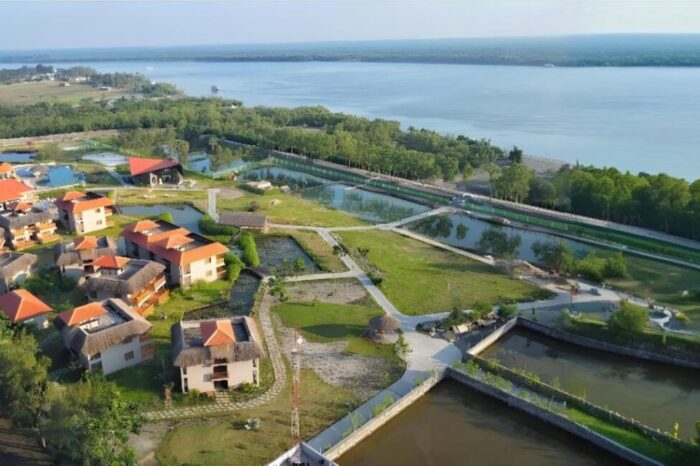
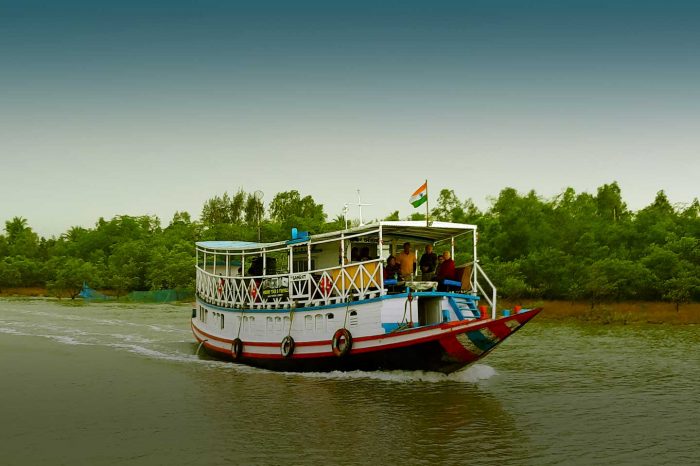
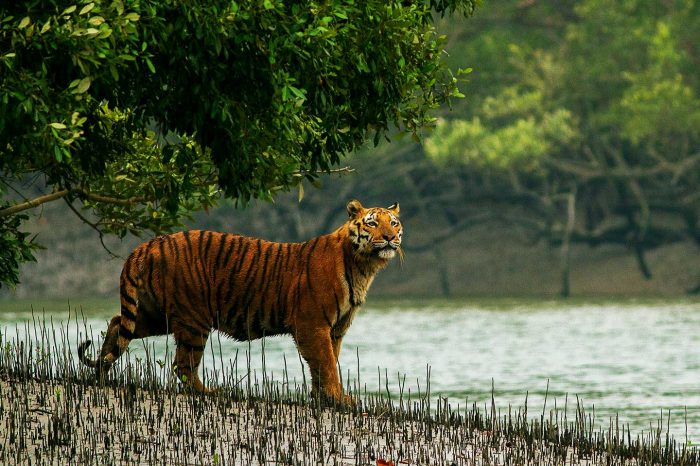
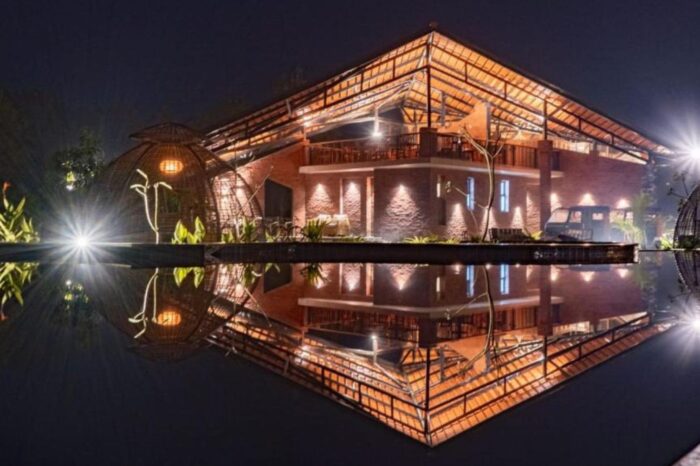


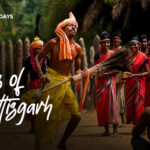
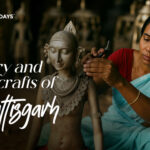
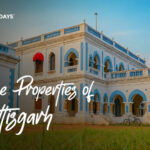
We had a great experience in Sundarban. Hoping to have more such experiences with them. Thanks to team Ocean6 Holidays for their great support through out the trip.